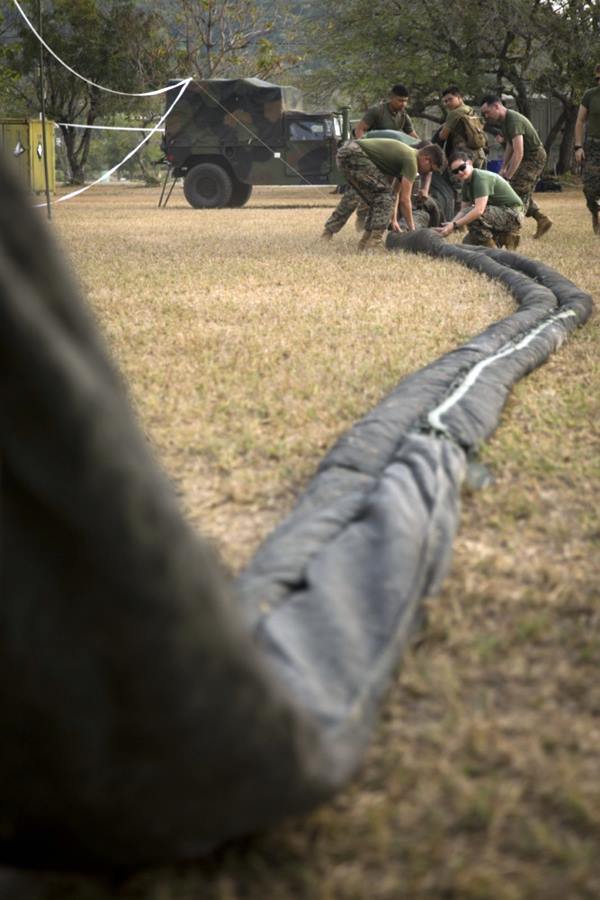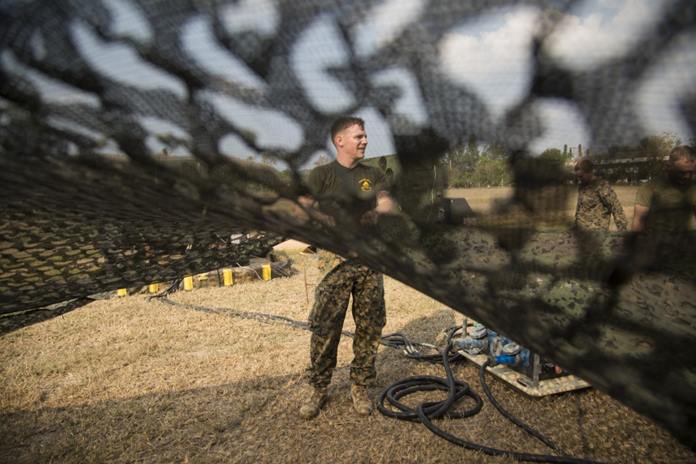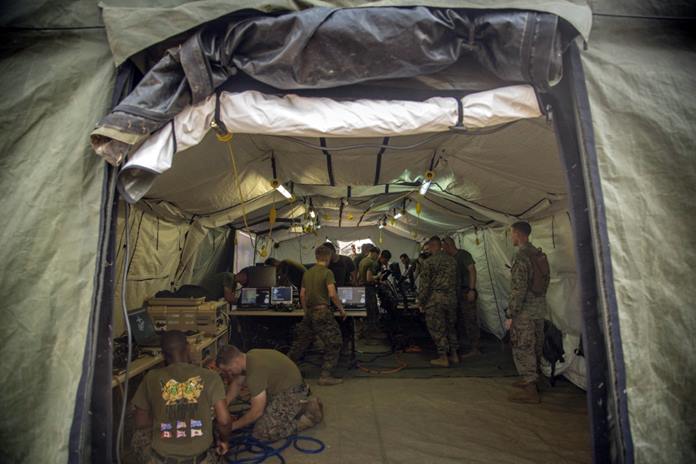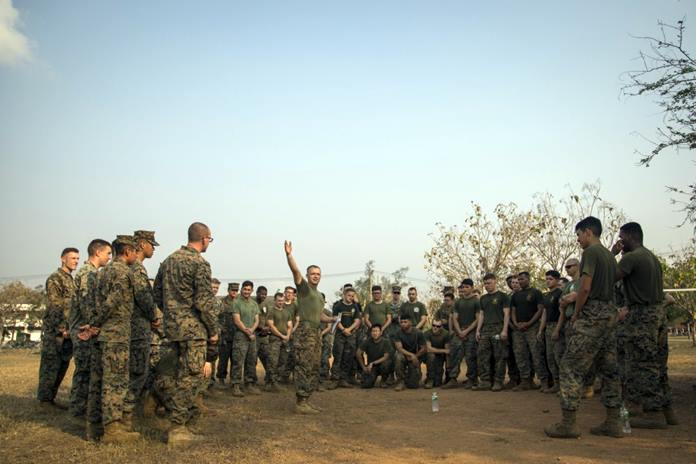
Sattahip, Thailand (Feb. 26, 2020) – For the first time, Marine Air Support Squadron 2 (MASS-2), is falling under the 31st Marine Expeditionary Unit (MEU), as the MEU leads all Marine Corps forces for Exercise Cobra Gold 2020 in the Kingdom of Thailand. Based out of Marine Corps Air Station Futenma, Okinawa, Japan, MASS-2 is providing procedural control and coordination for Navy, Marine Corps, and Thai aircraft for Cobra Gold.
To coordinate aircraft over hundreds of miles of Thai air space during the exercise, MASS-2 employs a Direct Air Support Center (DASC) based out of Camp Jessada as well as subordinate Air Support Elements (ASE) located at different exercise ranges throughout the country.
The DASC is the principal organization for connecting ground and aviation forces in the Marine Corps, and typically operates close to the forward line of troops to support an entire Marine Division in its maneuver. When a maneuver element makes a request for air support, whether it be a call for close air support or a medical evacuation, that request goes to the DASC.
The DASC then processes the request and allocates the best aircraft on station to support based on their centralized knowledge of everything operating in the battlespace. A DASC’s ability to rapidly displace is critical to evade enemy targeting, and DASC Marines pride themselves on the speed with which they can set up their operations tent with computers, radio communications, power generators, and camouflage netting.
During Cobra Gold and while executing their Marine Corps Combat Readiness Evaluation observation, the Marines of MASS-2 were able to set up their DASC agency in a record time of 52 minutes, beating the previous unit best by over 20 minutes.
“The Marines of MASS-2 have spent the last six months tirelessly preparing for the unit’s MCCRE while also supporting a TEEP that keeps the squadron continuously employed across the INDOPACOM AOR,” explained Capt. Cole Freeman, the DASC officer in charge, “During the buildup to CG20, Marines of all ranks contributed to developing TTPs that enabled the DASC to tear down, echelon, and set up within a time that was previously impossible. Through the dedicated training and leadership of our NCOs, we were able to set a new standard for not only our squadron, but the entire MASS community.”
For the MEU, aviation command and control is typically provided by one of MASS-2’s ASEs. An ASE is similar to a DASC in functionality, but controls air space with a smaller footprint. MEU ASEs usually operate out of a vehicles with maps, power amplified single channel radio communications, and a few highly skilled Marines capable of managing coordination and control of air space.
During Cobra Gold 20, MASS-2 has ASEs at Chandy Range supporting aviation operations with the Air Force’s 320th Special Tactics Squadron, Ban Dan La Hoi to support the culminating combined arms live-fire exercise for Cobra Gold, and Camp Jessada working with the main DASC agency exercise for the MCCRE and unit level training. The main DASC is also taking advantage of the unique exercise participants to work with Naval airborne sensors and Marine aviation assets in support of Cobra Gold. The integration across joint and bilateral forces in support of the various field training exercises proves the value that MASS-2 can bring to the table, according to Lt. Col. Justin Sanders, commanding officer of MASS-2.

“The biggest thing we bring to the fight is the ability to integrate the ground scheme of maneuver with aviation operations,” said Sanders, “ I think what we are doing during Cobra Gold is demonstrating that we can do that in a Marine-centric fight, an integrated Naval campaign, or a robust joint and coalition environment.”
Exercise Cobra Gold demonstrates the commitment of the Kingdom of Thailand and the United States to our long- standing alliance, promotes regional partnerships and advances security cooperation in the Indo-Pacific region.


 |
 |
 |





